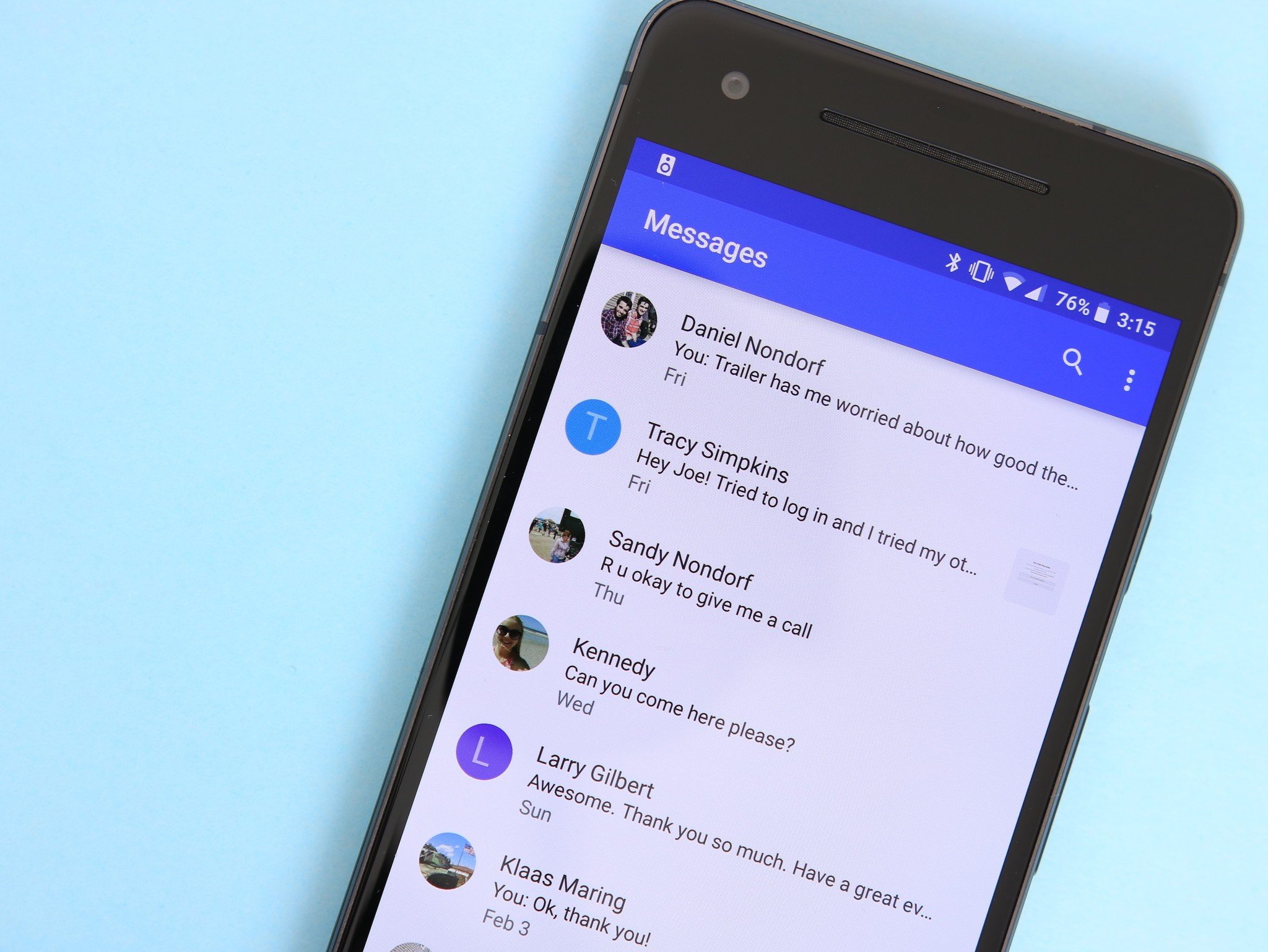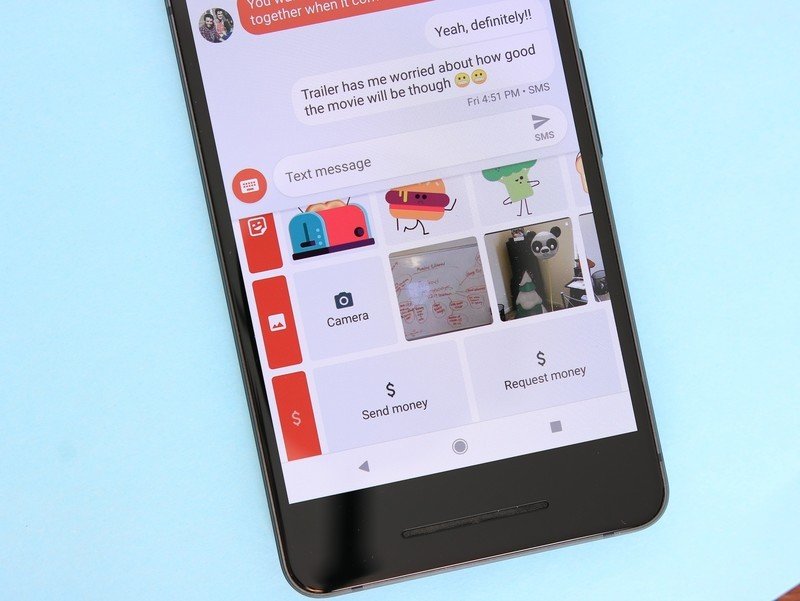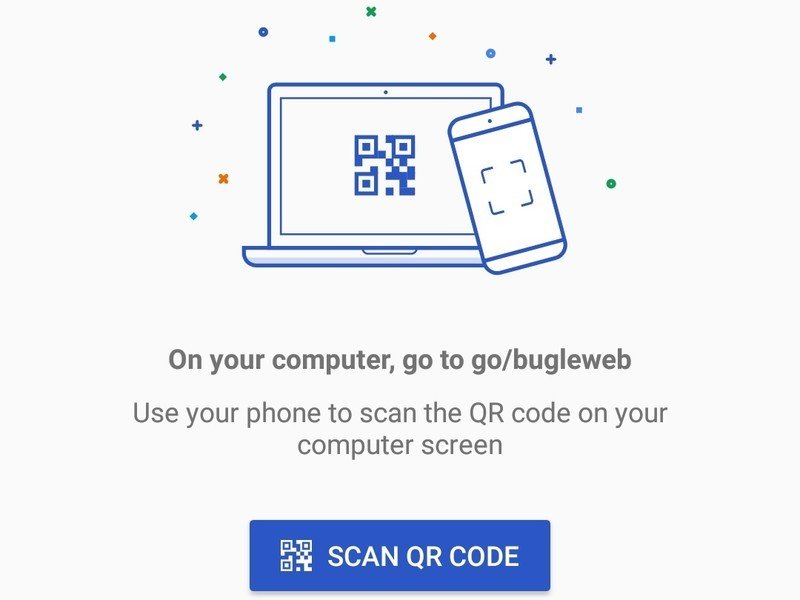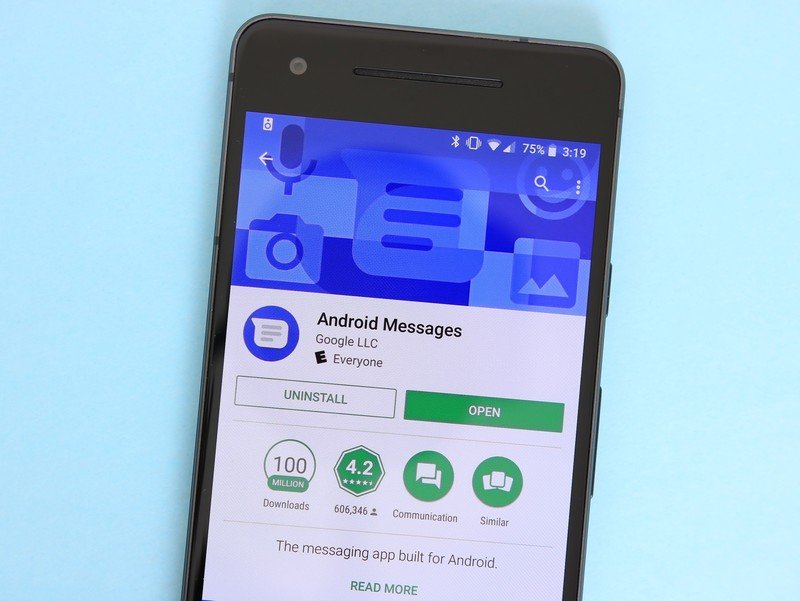Android Messages is Google's best chance to compete with iMessage

To say that Google's had trouble creating and maintaining a messaging service to truly compete with iMessage would be the understatement of the century. We've seen countless attempts in the form of Hangouts, Allo, Duo, Android Messages, and others trying to offer the same experience that attracts and holds so many people within Apple's ecosystem. Each has brought good ideas to the table, but Google's yet to unify these ideas under one single umbrella to make things simple for the end-user.
Thankfully, it looks like this will soon be changing. A recent teardown an upcoming version of Android Messages gave us a look at things Google has planned for a future release, and if all of this ends up going the way it looks like it will, we may soon have the iMessage competitor on Android that we've been waiting for for so many years.
I know we've been teased and disappointed by Google in the past, but this is why going all out with Android Messages is Google's best chance yet at finally delivering a messaging solution that people will want and use.
The things that Android Messages already does right

Asking your friends and family members to download an app just so you can talk to them is a conversation no one wants to have, but Android Messages is different. The app's been around on the Play Store for some time, and even if you download it to replace the default SMS app on a phone like the Galaxy S8, all of your existing conversations are still there.
More importantly, some manufacturers already choose to use Android Messages as the default SMS app for their phones. Motorola, Nokia, Huawei, Sony, ZTE, and the Pixel phones (obviously) already do this, and Google's constantly trying to convince more and more OEMs to follow suit. The combination of this and Android Messages use of SMS makes it far more accessible than anything Google's done in the past, and while SMS as a platform has its limitations, Google seems to have found a workaround for this (more on that later).
More: Huawei joins RCS movement by using Android Messages as default texting app
Along with your basic text and emoji messaging, Android Messages can already do quite a lot. While it may not be as fully-fledged as something like WhatsApp or Facebook Messenger, you can use it to send a variety of animated stickers, photos, voice messages, your current location, and even money through Google Wallet (soon to be Google Pay). Again, all of this is being done through SMS.
Be an expert in 5 minutes
Get the latest news from Android Central, your trusted companion in the world of Android
If you're on Project Fi, you can even use Android Messages to send Smart Replies — automatically generated responses that populate based on the context of your conversations. This is something that Google first introduced with Allo, and it's yet another step in turning standard SMS conversations into more feature-rich ones that users have access to out-of-the-box.
What Google's got in the pipeline
In its current form, Android Messages is a powerful texting app with a few fun features, clean design, and easy-to-use interface. Version 2.9 of the app was recently released to the Play Store, and while it doesn't bring a lot of user-facing changes, strings of code within the update reveal that Google has a lot of exciting things in the works. Here's a breakdown of what we can expect in the near future:

Screenshot from 9to5Google
- Web client for desktop texting — Android Messages is a great app, but in its current form, you can only access your conversations on your phone. In v2.9, snippets of code reveal that Google is preparing a web-based client so you can send and receive messages right on your computer. You'll go to a URL on your desktop/laptop, scan a QR code with your phone's camera, and that's all there is to it.
- Texting over Wi-Fi — One of iMessage's best features is the ability to send /receive texts seamlessly through both your wireless service and over Wi-Fi networks. This is another feature Google aims to adopt, and it'll ensure you can stay in touch with all your contacts no matter what.
- Higher-quality photos — You can already send pictures via Android Messages, but right now, the amount of compression that takes place results in a pixelated mess, since it mainly uses the old MMS standard. In the near future, Google will make it so you can send high-resolution photos that don't look like garbage.
- Read and typing indicators — Most all messaging apps allow you to see when someone is typing and when your messages have been read. It's one of those things you don't really think about, but it's a core feature we've come to know and expect in early 2018. Once again, this is something that's coming soon to Android Messages.
How Google can make it work this time
While it's easy to look at all of these features and get excited, I also understand that this is someplace we've been before. Whether it be with Hangouts, Allo, or something else, Google's tried making compelling messaging services multiple times that never caught on the way it was hoping.

However, I honestly believe that things will be different things time around.
Google's not making a new messaging service – it's taking texting and making it way better.
For starters, Google's simply adding new features to an app that already exists. At the time of publishing this article, Android Messages already has 100 million downloads from the Play Store. For comparison's sake, Allo has just 10 million. That's still a way off from WhatsApp and Facebook Messenger's 1 billion+ installs, but it means that Google already has a large user base at its disposal. If Google invests the time and money into marketing campaigns for Android Messages the way it does for Photos and Duo, it can easily add more and more users in a snap.
As for how these new features will be implemented, that's something still up in the air at this time. Most carriers in the United States still use the older SMS standard for text messaging, but Android Messages is fully capable of supporting RCS. In a nutshell, RCS is an upgraded version of SMS that allows for many of the features listed above. However, in order for phones to take advantage of this, you need support from carriers and manufacturers.
In the code for v2.9 of Android Messages, there's a line referencing that users can "upgrade" to access the upcoming goodies. Has Google found a way to bypass the need for carriers and OEMs to adopt RCS and instead act as a middle-man of sorts? If so, this would essentially transform Android Messages from a basic SMS app into something much more powerful with the flip of a switch.
My guess is that Google will talk in-depth about what it's working on in these regards at its I/O developer conference this May, and if all goes as I'm hoping, we may finally have the iMessage alternative we deserve.
Google prepares to turn Android Messages into a true iMessage competitor
Joe Maring was a Senior Editor for Android Central between 2017 and 2021. You can reach him on Twitter at @JoeMaring1.

